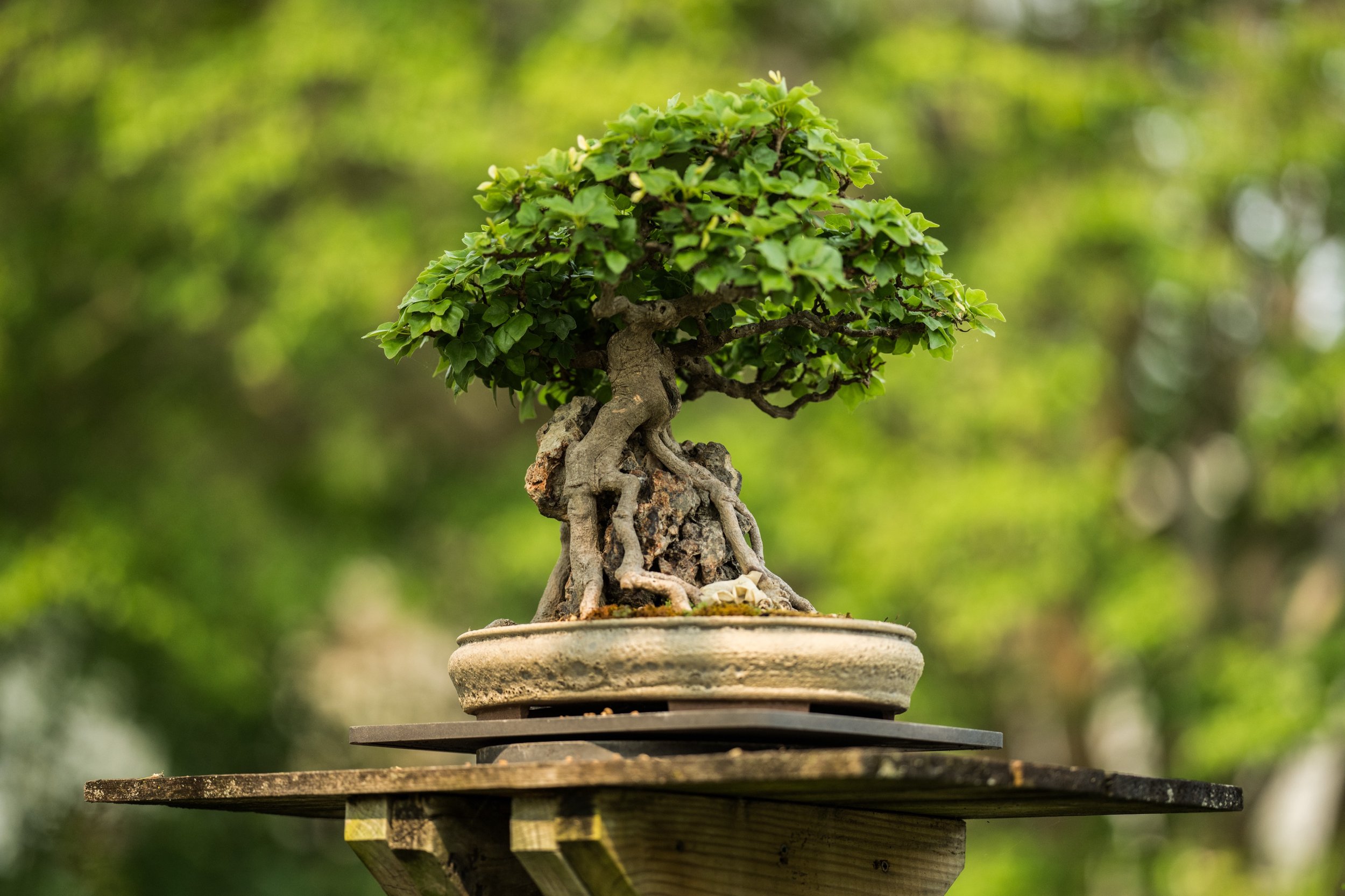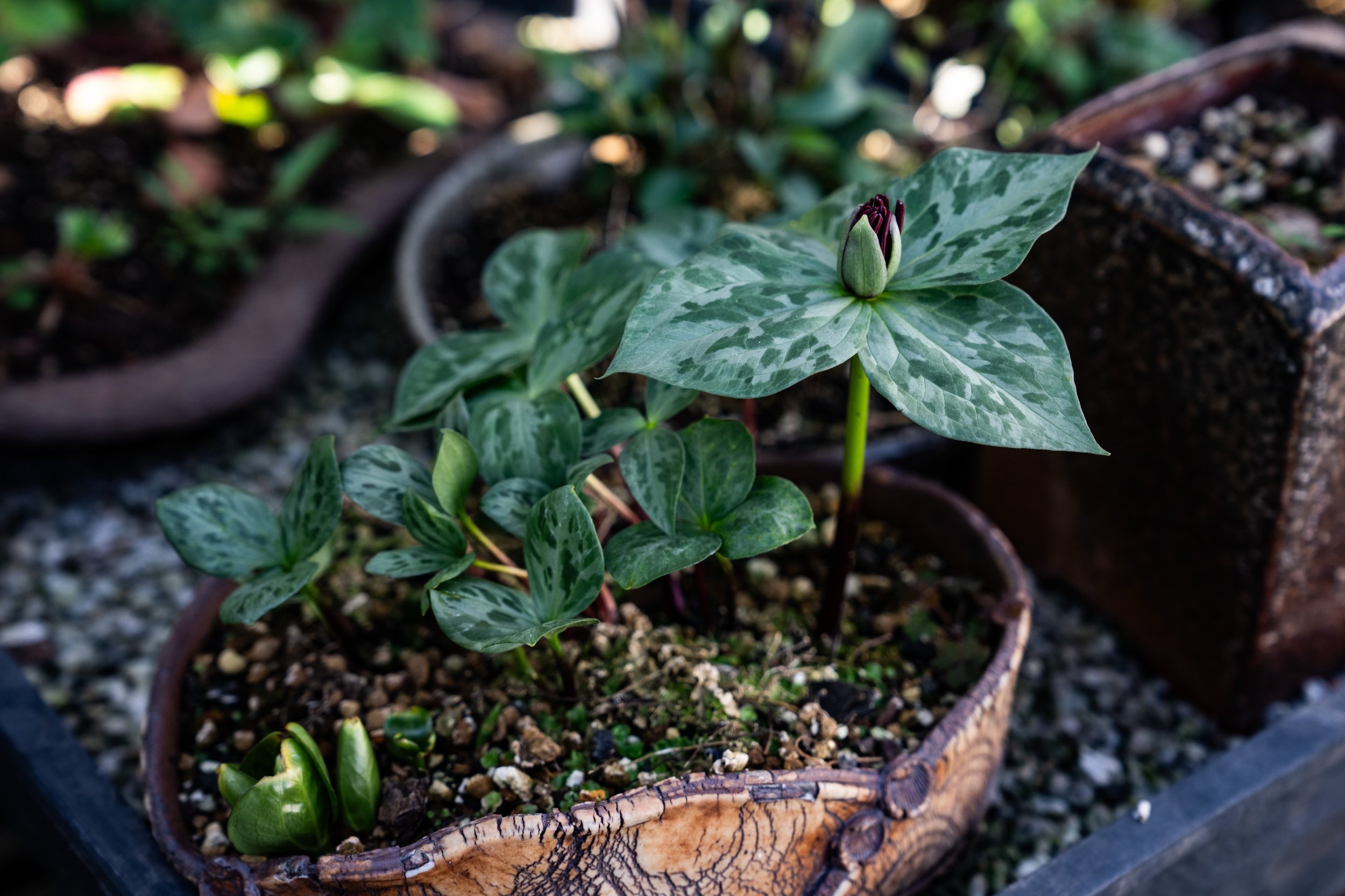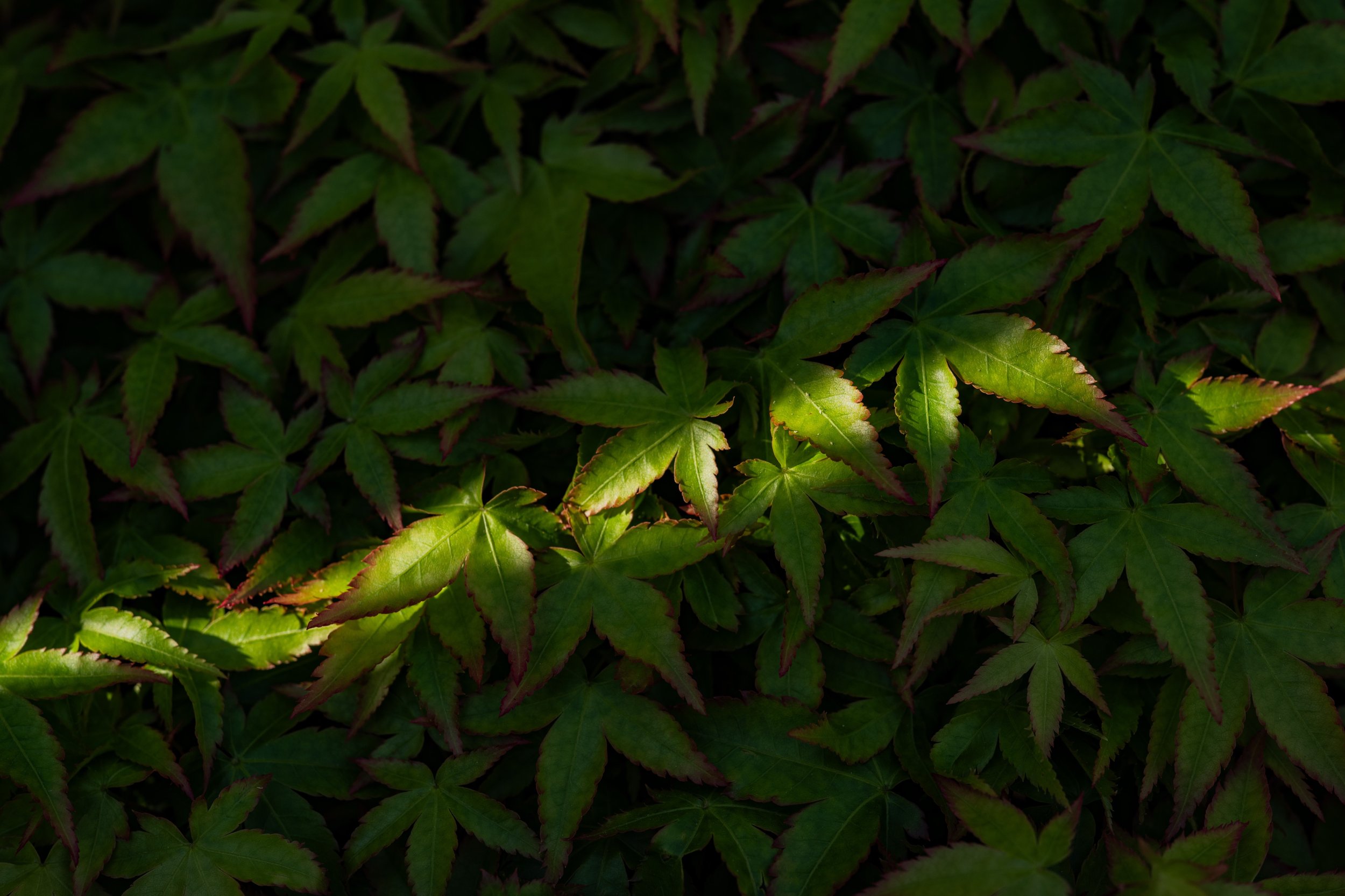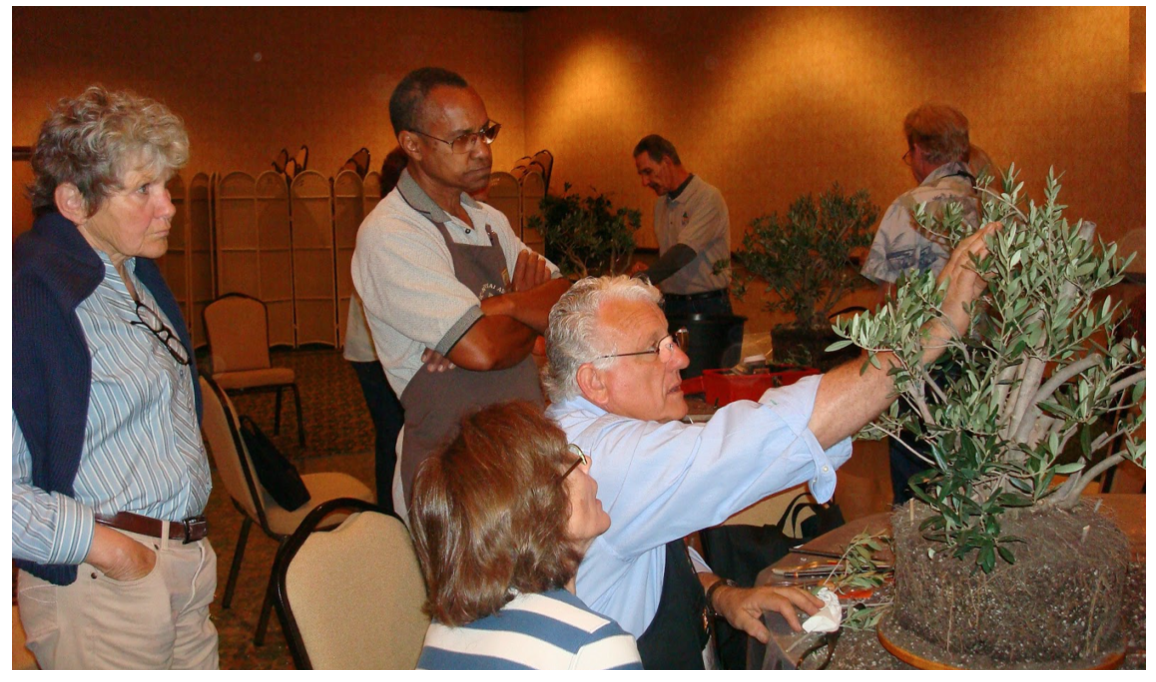Japanese apricot (Prunus mume 'Kobai')
Sunlight glinting off bright, young leaves. The aroma of sweet quince drifting across your path. The ambiance of refreshed, peaceful trees in the courtyard.
No, this is not a dream — it’s just a peek into the sensory experiences that await you at the National Bonsai & Penjing Museum this spring.
Kusamono display
The energy of the season always brings lots of activity to the Museum, from new growth and fresh buds to tree placement shuffles and pavilion adjustments. In an interview this week, Museum Curator Michael James shared an inside look at preparing for the surge of warm weather visitors, and he discussed what makes the beauty of bonsai so unique.
The Post-Winter Waltz
Sensitive trees are protected in the greenhouse with controlled temperatures during the frigid months. Meanwhile, the consistently cold weather this past winter has prepared the trees for strong growth this spring. Winters that are peppered with warm and sunny days encourage bonsai and penjing to open up earlier than preferred, Michael said.
“When those leaves emerge under glass or in a protected environment, they’re extra thin, and sensitive to sun and wind,” he said. “If we move the trees out at that point, any slightly harsh weather can easily damage that foliage. This year, the trees have stayed very dormant, so we can move the deciduous trees outside before they sprout.”
Trident maple (Acer buergerianum subsp. forosanum ‘Miyasama’)
Every spring, staff complete a major structural change at the Museum by removing the roof of the Chinese Pavilion, which no longer requires winter protection. But the trees aren’t yet completely in the clear. Museum staff remain on frost watch, in case a cold snap sweeps through and requires them to protect these specimens once again.
“There’s this spring dance in horticulture of watching the weather for that last cold night, that last freeze, and moving sensitive plants back inside for a night or two as needed,” Michael added.
A New Focus
The springtime shuffle also allows staff to intentionally ponder this year’s displays. Michael, alongside Assistant Curator Andy Bello and other Museum staff, build the bonsai, penjing, and stone placements from scratch each year, ensuring the dominant flow of directional branches leads visitors through the enchanting exhibits.
Sargent juniper (Juniperus chinensis var. sargentii)
The courtyard display for 2025 showcases native species from the Museum’s collections, aligning with the U.S. National Arboretum’s Lahr Native Plant Symposium, hosted annually in March.
“It’s amazing to see every pedestal in the central courtyards display a native tree this year,” James said. “These species are all relatively new to bonsai, because they weren’t used in the Chinese and Japanese tradition. It really shows how bonsai is global now.”
Though leaf removal, root care, and other maintenance might need different approaches from more traditional bonsai species, Michael and his team have developed their expertise by working with native trees and getting to know their unique characteristics.
Native species also naturally draw pollinators, which facilitates a healthy ecosystem. They are well-adapted to the local environment, making them excellent choices for bonsai cultivation that reflects the natural appeal and resilience of regional landscapes.
Spring Showstoppers
Japanese maple (Acer palmatum)
As with most gardens or naturally occurring vegetation, the beauty of bonsai flourishes in the spring. Small vegetative buds open up on deciduous trees, while the flowering species flaunt their scents and petals.
Drummonds red maple (Acer rubrum var. drummondii)
Chinese quince (Pseudocydonia sinensis)
In the international pavilions, inconspicuous red pearls on maple varieties will unfurl into delicate, star-shaped flowers, while the Japanese apricots boast bright pink blooms. The Chinese quince will display unique flowering, which occurs on bare branches before vegetation sprouts, as well as the cherries. Crab apples and tricolor Higo camellias already have leaves when flowering. Satsuki azaleas will be in full bloom for May visitors – with "satsuki" referring to the "fifth month" in Japanese.
Can’t-Miss Events
Please join us for the Potomac Bonsai Association Festival on the weekend of May 10-11, which coincides with World Bonsai Day on May 10. We will also be celebrating an incredible milestone: The 400th anniversary of the legendary Yamaki Pine. Stay tuned for more about these events in the next few weeks!
World Bonsai Day will include a Beginner Bonsai Workshop (Saturday and Sunday), as well as appearances and workshops from Andrew Robson of Rakuyo Bonsai (Saturday) and John Naka student and contemporary Guy Guidry of NOLA Bonsai (Sunday), who will demo work on his tree in the North American collection.
We hope to see you soon to absorb the beauty of the art of bonsai this spring! Stay tuned for more information on World Bonsai Day and plan your visit here.
Click images below to enlarge. Photos by Stephen Voss.

































